I haven’t covered Russia-Ukraine much from a technical perspective, but recently SchlomoTube shoved this into my face and I felt the need to cover it. They start out by pointing out that, contrary to what retards on the internet think, UAVs are easy to kill.
A report in May found Ukraine was losing more than 10,000 drones per month. My next guess says ‘swarms of drones are the future of war.’
I’m not editing these two sentences together. CNN host Fareed Zakaria really transitions from “here’s why drones are failing, now here’s my guest in denial.”

Swarms of drones may be the distant future of war. The current of war is drones getting holocausted. Methinks that drones, at least without an unimaginable technological leap, are more of a trend. They are the bell bottom jeans of modern warfare.
That’s overly harsh. Short range quadcopters are similar to neural net AIs, in that, while they are enormously overhyped, they do serve a valid niche. As a result, it’s hard to make blanket statements without writing a dissertation length piece.
The cliffnotes are: they have extremely short range and endurance, typically of less than 30 minutes and 10 kilometers, and they exist almost entirely to let infantry or artillery observe a tiny area for a brief moment from another vantage point. They aren’t worthless by any stretch of the imagination, nor are they particularly revolutionary. They are analogous to sniper teams, in that they provide value while still being somewhat niche. It’s definitely not a dumb move to have a few of these things, train a few operators, and let the infantry figure out when to use them at their discretion.
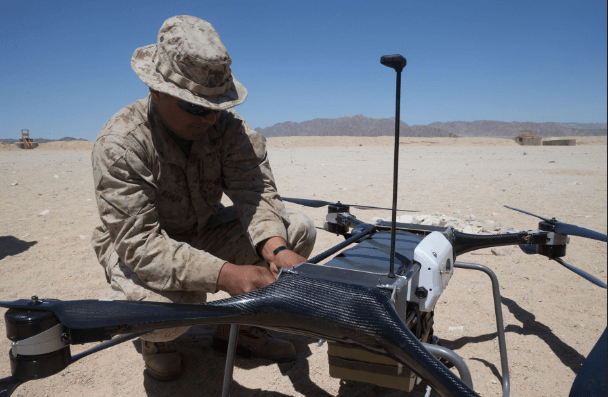
Ex-Google CEO Eric Schimdt’s statement however, that “swarms of drones are the future of warfare,” was idiotic right from the start, and displayed a fundamental lack of understanding. First of all, it assumes that you are putting weaponry on these quadcopters. Considering the already limited range and endurance, we need to cut into that even more in order to carry so much as a single small mortar. 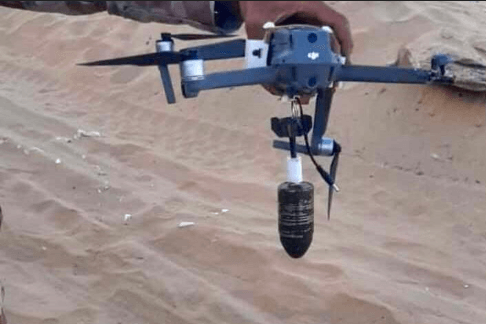
Occasionally they put a bunch of rifle grenades in there to mix it up. Notice how the two UAVs above and below don’t appear to be carrying large cameras on them? That’s because their payloads are so small that you can’t carry much more than a webcam if you’re also carrying these weapons. Good luck loitering in the area for long with a drone that can barely get airborne with the payload, and had a 30 minute endurance while carrying nothing.

Putting a tiny grenade on a quadcopter, then sending it on a kamikaze mission to an area where you think you see the enemy, essentially turns it into a weird sort of artillery shell. Theoretically we’re trading massive amounts of firepower for some potential added precision. That may be worth it in some cases, but it’s not like enemy troops are just walking around out in the open not wearing camouflage. If they were doing that, you could just fire airburst artillery in their general direction and you wouldn’t need any precision.
Just like artillery, these quadcopters also place a strain on your logistics, since they must be transported from somewhere, batteries included, to the frontline. Probably even further than artillery shells, since they have such short ranges. That strain gets increased when they get shot down or disabled in such astonishingly high numbers.

This is the “future of warfare.” We know that because Eric “I’m CEO Bitch” Schmidt told us.
(3:45)
Eric Schmidt: One of the things that I learned was called a kamikaze drone, which was a $400 Chinese drone that carries a small payload.
CNN shows the below footage as this narration plays. Presumably it’s of the Chinese made drone that Schmidt is talking about.
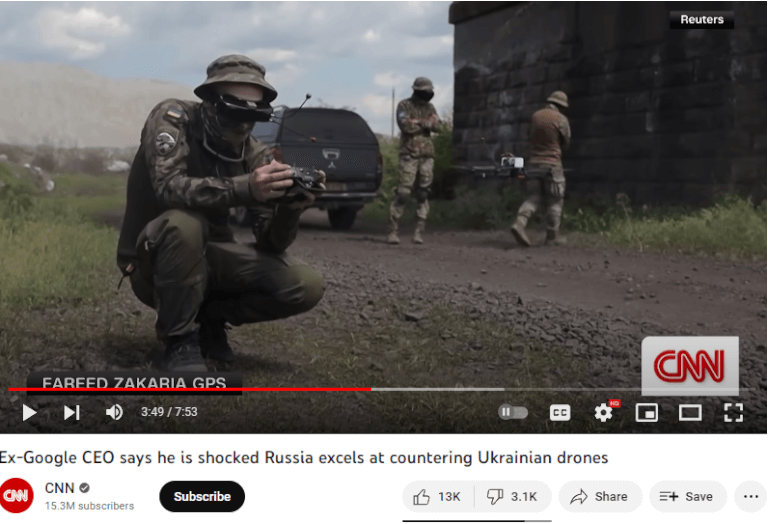
You’ll notice that it is beyond tiny. It’s not clear that this thing could carry even a grenade, let alone for any significant range, but let’s say that it’s a flying hand grenade with a webcam and a 10 km range. Considering that, should you find the enemy, you can usually direct artillery to bombard them, adding the grenade would turn this into a niche harassment tool at best. You may also be wondering what the point is anyway, since the range is so small you need to already know where the enemy is to within a very small area, probably something like 100mx100m, and, again, the troops will probably be camouflaged and hidden in trenches, so you won’t find them anyway.
It moves so fast you can’t shoot it down. I had thought that was the innovation of the war.
Ah, but the advantage is that you can’t shoot down this quadcopter, unlike bullets, missiles, rockets, artillery shells, and bombs.

Okay, maybe you can’t shoot those down either, at least not with any reliability, and maybe you can shoot down the flying grenade, albeit not with 100% success, but especially if it’s loitering in the area which it needs to do to find you which is the entire point versus an artillery shell. But trust me, swarms of these things will truly revolutionize modern warfare.
Two generals told me yesterday that I’m wrong, and what they really need are cruise missile drones which can go really far with wings and carry more payloads.
You need cruise missiles. Not “cruise missile drones,” just good old fashioned cruise missiles.
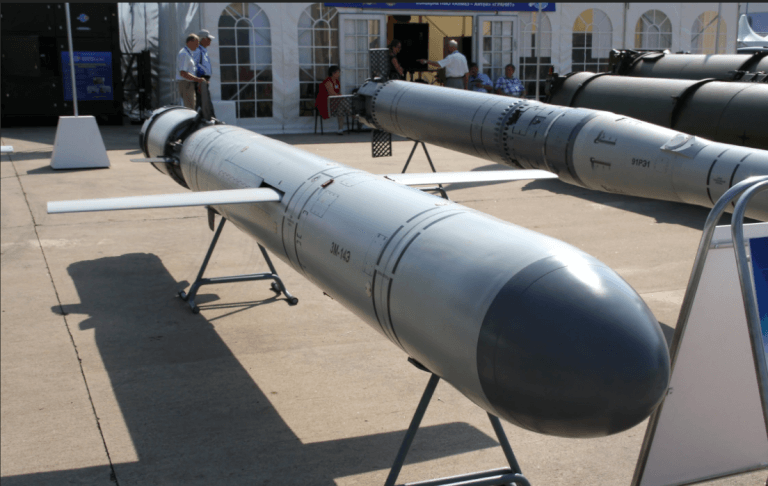
And TV guided missiles are not a new thing either. In fact, they date back to WWII.
I often find it frustrating when talking about drones, because dipshits like Eric Schmidt talk about them while forgetting all the things that the military already has, or never knowing in the first place. “Let’s put a TV camera on a missile,” sounds like a revolutionary concept, until you realize that it is decades old.
Similarly, we don’t need cruise missile drones when we already have cruise missiles. They are designed to skim as low to the ground as possible, have extremely minimal turning ability – which would simply add more drag for no return – and hit the known target. Adding a camera to something the size of a tomahawk and getting it to patrol high enough over an area to LARP like it can find things is a great way to massively reduce its effective range in exchange for having it shot down, wasting all the precious fuel onboard and giving us nothing.

I have to circle back to something that Schmidt said about Ukrainian drones earlier in the video.
Fareed Zakaria: How many drones are [Ukraine] using per month.
Eric Schmidt: They’re on pace for using a couple hundred thousand drones in a year. Most drones only survive one or two flights before they fail or they’re blocked. I was shocked at how good the Russians were at electronic warfare and jamming. Basically everything you send into this battlefield, which is quite narrow by the way, *blathers on* they jam everything. GPS is jammed, but also communications is jammed, so normal drones don’t work.
A couple hundred thousand drones per year, most of which survive only one or two flights before failing or being jammed out of the sky. Since even the most cheap Chinese drones are typically reliable enough to survive multiple flights, I’m guessing it’s mostly jamming that’s taking them out of action. That’s bad, but more important is the sheer quantity of waste.
To put the numbers into perspective, we’re talking about 550 drones lost per day, or about 17k per month. The US Military Industrial Complex is promising to increase its artillery shell production from 30k per month, to 70k per month. Currently, they produce barely more than one shell for every quadcopter that Ukraine sends to go up into the sky and get jammed, accomplishing next to nothing. This is not some sort of minor little project that is without opportunity costs.
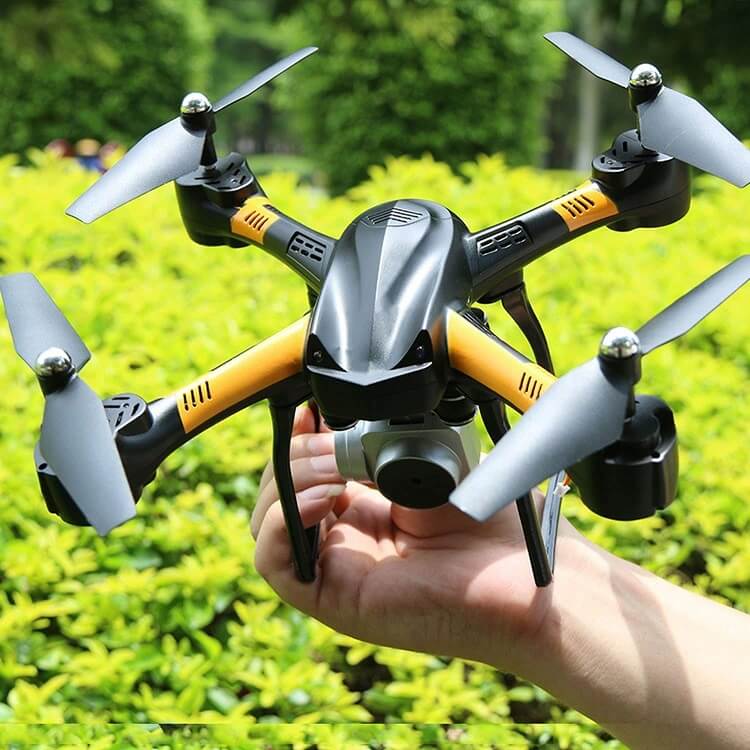
Yet they accomplish so little that the only time you hear about drones is when some dipshit is bloviating about how they’re just seconds away from revolutionizing warfare. Few of the channels who talk about the war bother mentioning drones, except in passing.
But what if we could create a fleet of cheap, rugged, and most importantly long range drones? Then we could stage them from behind the frontlines, and have them fly massively past the frontlines. Unfortunately, they would still be subject to electronic warfare, and have the terrible visibility that a shitty little camera gives you from a plane. But, what if, and I know this sounds crazy, we just like PUT A FUCKING GUY IN THE PLANE AND THEN ACKNOWLEDGE THAT IT IS OKAY TO HAVE SOME GUYS DIE WHILE FLYING INSTEAD OF ONLY INFANTRY.
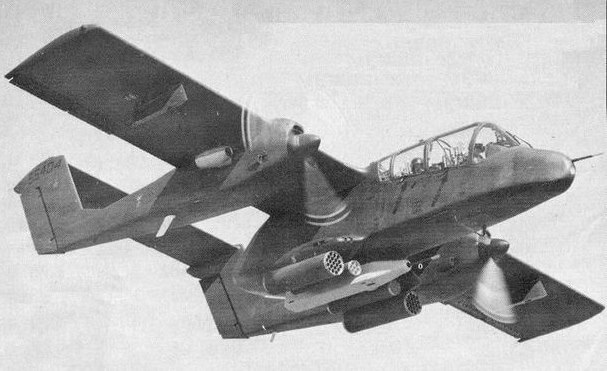
But we can’t do that. I mean sure, the US military lost 65k aircraft in WW2, and 11k in Vietnam. And sure, they produced about 325k aircraft during WW2. But to mass produce something that isn’t a crappy little gimmick done at the behest of billionaire nerds who think that drones are cool? Unconscionable.

Sure, Ukraine has such high casualties that they refuse to tell us what they are, and they’re clearly in the tens, if not hundreds of thousands. Infantrymen, tankers, truck drivers, support, you name it. Hell, they’ve probably had hundreds of drone operators get killed. They are near the frontlines after all.

But those are just boring little infantrymen. Unimportant peasants. To have even 1,000 pilots die in cheap planes that, due to their nature, you can’t make any serious profits off of?

That’s a humanitarian crisis that we simply cannot accept. Remember, no matter how many soldiers die, dipshits think it’s really important to never have anyone die while piloting an aircraft. It’s suddenly massively more important once you get into the air, which is why we need to switch to making all these drones that can just be jammed out of the sky. It’s the current of warfare, just like bell bottom jeans were the current of fashion, for a while.



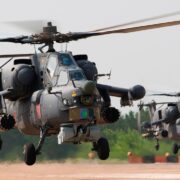












The Russians/Iranians have already invented an effective “drone swarm” tactic in the form of the ‘Geranium’/’Shahed’ . These are cheap, light, rather slow (propellor-driven) flying bombs with guidance technology not much better (although digitized) than a WWII “buzz bomb”. They are not a system involving “sensor fusion”, ” machine learning”, or autonomous swarming behaviour.
The former is an effective way of overwhelming, in large numbers, contemporary air defence tech that relies on fast, large, expensive interceptor missiles. The latter is currently a solution in search of a problem.
B-b-b-but muh sensor fusion on the 9th generated battlzone with integrated air defense systems and force multipliers! We can’t just put a heckin camera on the front of a slow moving cruise missile and fly it into the enemy. That’s not nearly kewl enough for CEO Eric Schmidt.
BTW, one of the obvious uses of drones is to just make a bunch of super cheap small plane sized drones and have them fly over the enemy, saturating the air defense systems. But that, again, doesn’t capture the imagination of CEO Eric Schmidt, so it’s apparently not an option.
Weird how these corporate guys have turned going to war as something only some kind of dumb faggot would do. But then I guess that today’s modern soldiers would prefer to fiddle with a bunch of Costco drones, while artillery shells rain down on them. So maybe it all evens out.
Notice how in 1944 when the Germans finally committed to a total war economy strategy that their aircraft production increased by 50%. This is with massive allied air bombardment. I suppose if you concentrate on killing civilians as per the british plan devised by that jew “Lord Cherwell” and don’t actually bomb the means of production this will happen. What was it Harris wrote? “German cities aren’t worth the bones of a single british grenadier”. THIS was the real holocaust of WW2 (as well as americans firebombing Japanese cities. Not to mention the nuclear attacks which were to satisfy the jewish lust for destruction).